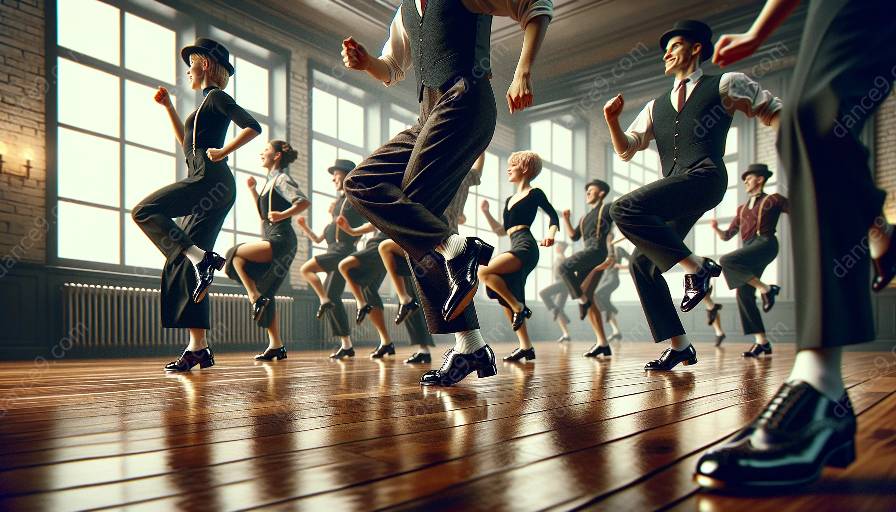Tap dance is a unique and exhilarating form of dance that has deep connections with various other dance styles. Through its rhythms, movements, and cultural influences, tap dance shares fascinating ties with ballet, jazz, and hip-hop, among other styles. Understanding these connections can enrich the experience of learning and appreciating tap dance and its relationships with diverse dance forms.
The Influence of Tap on Other Dance Forms
Tap dance's unique emphasis on rhythm and percussion has had a significant impact on other dance styles. The intricate footwork and syncopated beats of tap have influenced choreography in jazz, musical theater, and even contemporary dance. Many dance instructors incorporate tap techniques and concepts into their classes to enhance students' musicality, coordination, and rhythmic awareness.
Tap dance has also played a role in shaping the development of hip-hop dance. The improvisational nature of tap and its emphasis on self-expression resonate deeply with the freestyle and individuality found in hip-hop dance culture. As a result, many hip-hop dancers, particularly those specializing in street and funk styles, have integrated elements of tap into their performances, creating a fusion of movement and sound that bridges the gap between these two distinct dance forms.
Connections with Ballet and Modern Dance
While tap dance and ballet may seem worlds apart, they are connected through their shared focus on precision, technique, and musicality. Many renowned dancers and choreographers, such as Gregory Hines and Savion Glover, have seamlessly blended the fluidity and grace of ballet with the rhythmic complexity of tap, demonstrating the potential for cross-pollination between these two seemingly contrasting styles.
Similarly, tap dance has found its place within the realm of modern dance, bringing an additional layer of percussive and rhythmic elements to choreographic compositions. This integration has given rise to innovative performances that push the boundaries of traditional modern dance, showcasing the versatility and adaptability of tap as it interacts with other movement vocabularies.
Exploring Fusion and Collaboration
One of the most captivating aspects of tap dance is its ability to fuse with a diverse range of dance forms, creating dynamic and engaging collaborations. For instance, the blending of tap and flamenco has resulted in intricate and fiery routines that showcase the parallels between these two culturally rich dance traditions. Additionally, tap has been synergistically combined with Irish step dance, creating captivating performances that celebrate the shared themes of tradition, rhythm, and storytelling.
Furthermore, the fusion of tap and jazz dance has given rise to electrifying showcases that epitomize the spirit of syncopation and improvisation. Through these collaborations, dancers have found innovative ways to connect and intertwine their respective art forms, fostering a sense of unity and creative exchange that transcends stylistic boundaries.
Tap in Dance Classes
When introducing tap in dance classes, instructors often emphasize the importance of understanding its connections to other dance forms. By contextualizing tap within a broader dance history and lineage, students gain a holistic perspective that enriches their learning experience. As a result, students develop a deeper appreciation for tap dance and its interplay with various dance styles, fostering a more comprehensive understanding of the art form.
Additionally, integrating tap into dance classes provides students with a well-rounded foundation in rhythmic movement, encouraging them to explore diverse styles and expand their artistic range. This multidisciplinary approach not only enhances students' technical skills but also nurtures their creativity and adaptability as dancers.
Conclusion
In conclusion, the connections between tap dance and other dance forms underscore the rich tapestry of movement, culture, and history that defines the dance world. By recognizing and exploring these connections, dancers and enthusiasts alike can gain a deeper appreciation for the interconnectedness of dance styles and the endless possibilities for collaboration and artistic expression.













































































